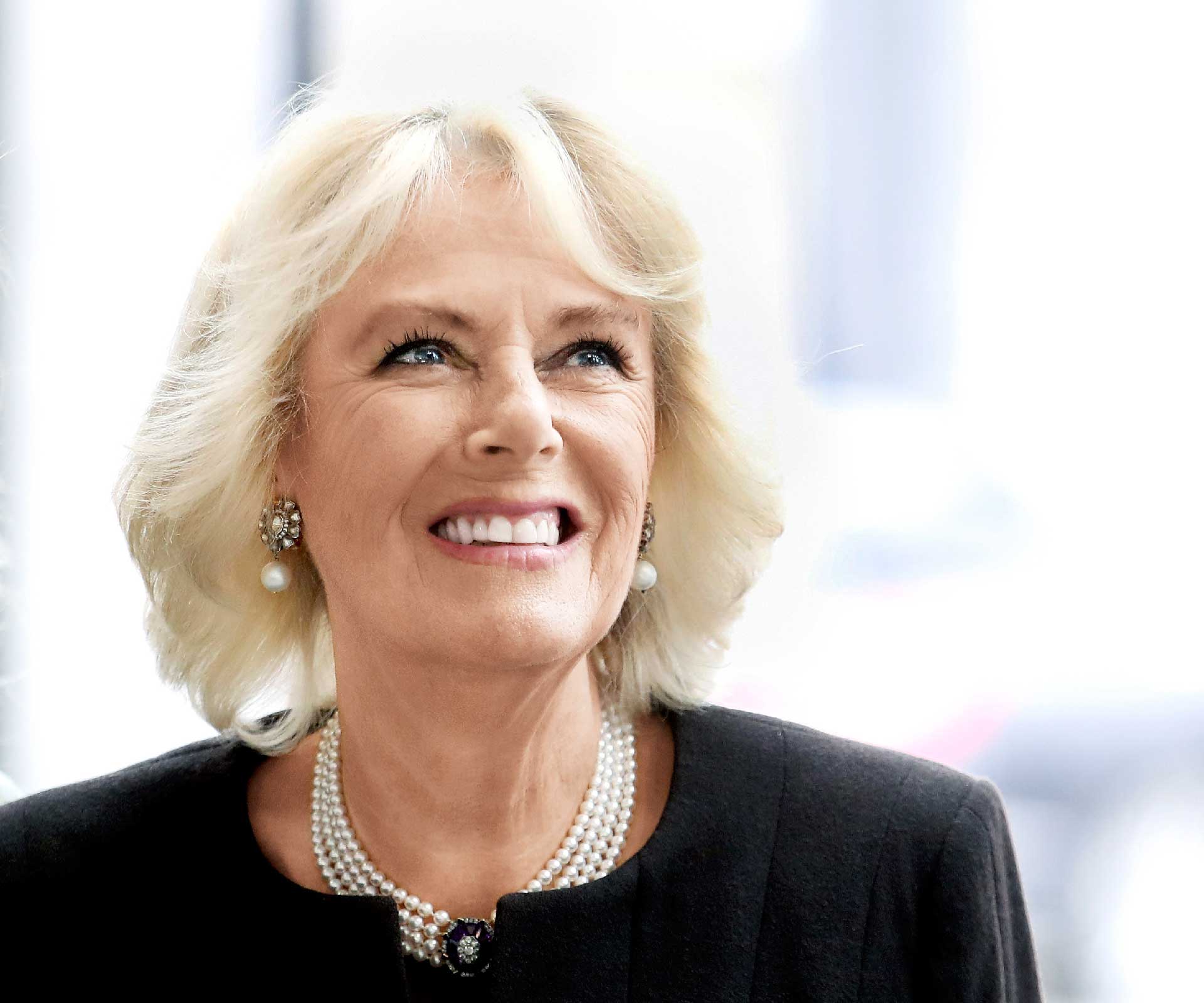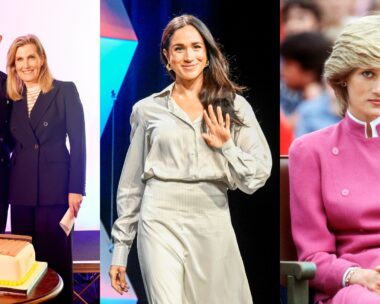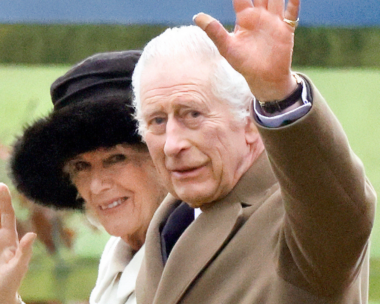It’s International Women’s Day in London and in a courtly rose-pink room dotted with priceless artwork and liveried footmen, in the heart of Buckingham Palace, a noisy swell of boisterous chatter is gathering force.
The Duchess of Cornwall is hosting a lunchtime launch party for the Women of the World Festival and the impressive list of invitees includes actress Gillian Anderson, former Prime Ministers’ wives Cherie Blair and Sarah Brown, Foreign Minister Boris Johnson’s motormouth sister Rachel Johnson, comedienne Phoebe Waller-Bridge and author Kathy Lette, to name a few.
They’re a feisty, imposing lot and as the Duchess weaves her way through the throng, shaking hands, embracing and bursting into laughter, she looks in her element. The Duchess and I have met on several occasions in Australia and London, and she immediately welcomes me into the Palace fold and shares proudly: “This is a wonderful group of women, isn’t it!” She’s right.
It’s now 12 years since Camilla Parker Bowles married into the “Royal Firm”. The love match that turned her countrywoman world upside down also propelled her into the busiest and most high-profile job of her life.

“Women of the World provides a place where hard-hitting issues that deeply affect women’s lives can be openly discussed,” says the Duchess at the launch of the 2017 festival at Buckingham Palace.
On July 17, Camilla will turn 70 and her future as Princess Consort – or possibly Queen, if public opinion concedes and allows her the title many believe she’s due – is only going to become more industrious.
As she has grown in confidence supporting husband Prince Charles, so the Duchess has also developed her own objectives and vocations, and they make for a surprising portfolio.
Today as President of the WoW Festival – which she also launched in Sydney in 2012 and Washington in 2015 – the Duchess is hitching her star to a frankly feminist mission, to fight for women’s rights and beat the scourge of domestic violence and sexual abuse, while also tackling issues of diversity. It’s gritty, vital work, and the Duchess doesn’t pull her punches.
“I believe that it’s more important than ever for women of all ages and from every walk of life to unite,” says Camilla in a rabble-rousing speech. “WoW provides that place, where hard-hitting issues that deeply affect women’s lives can be openly discussed.”

The Queen, the Duchess and Prince Charles at Ascot races.
WoW founder Jude Kelly couldn’t be more thrilled with the Duchess’ passionate involvement with the Festival.
“The whole territory around feminism can be perceived as something which nice people don’t do,” she tells me as we perch on a silk couch in the entrance hall of the Palace.
“And the Duchess, by being so committed to the idea there is injustice in the world for girls and women, that it’s not right, and we should change it, makes it possible to open many doors. People feel she is a safe, authoritative voice. It gives it a legitimacy.”
Cherie Blair says she’s known the Duchess “from the time when my husband [former British Prime Minister Tony Blair] was in 10 Downing Street” and thinks that the fact that she came to royal life late is a bonus.
“One hesitates to say that she was an ordinary woman, but she was a person who lived a real life in the community and because of that she’s very aware of some of these issues.
“It is a strange role [being a royal]. You have a profile but no power, but the question is, what do you do with your profile? I know she cares deeply about the victims of sexual violence and as President of Barnardo’s she puts in a huge amount of work. I’ve seen it myself. And she has done it in a quiet, not a flashy, way.”

Camilla with siblings Annabel Elliot and Mark Shand in London in 2010.
Eleanor Mills, Editorial Director of The Sunday Times adds, “I think she’s always been known as someone who was really rather good fun and down-to-earth, and a kind of proper person, and she’s exactly like that in real life. I think she’s had a difficult birth into public life. She was put in a really impossible position and she has dealt with the hand that she was given incredibly well and elegantly.”
Camilla Shand was born in 1947 in King’s College Hospital in London and raised in rural Sussex and South Kensington. Her father, Major Bruce Shand, was an officer in the British army, and a dashing decorated war hero; her mother, the Honourable Rosalind Cubitt, a society heiress, the daughter of the third Lord Ashcombe.
Although a product of postwar Britain, Camilla’s childhood was more reminiscent of the aristocratic country life of a more gentrified era.
“Britain had just come out of the war and I think there was a determination by people who’d been in the war, and that included Camilla’s parents, to revert back to type,” explains royal biographer Christopher Wilson, author of A Greater Love: Prince Charles’s Twenty-Year Affair with Camilla Parker Bowles.

Five-year-old Camilla with her younger sister Annabel.
“During her upbringing there was an element of British society that wanted to turn the clock back.”
Camilla was the eldest and very close to her sister, Annabel, and brother, Mark, and family life was warm and precious.
“While no childhood is perfectly idyllic, I think Camilla’s was pretty amazing,” says Wilson.
As a teenager, Camilla went to a Swiss finishing school and on March 25, 1965, was presented in the archaic debutante season in London, one of 311 girls who came out that year.
“The British upper-classes brought their daughters out on display and showed them to advantage in tiaras and silk gowns, really as a celebration of their survival as a group. And she was part of that,” says Wilson.

Camilla comes out as a London debutante.
Camilla married cavalry officer Andrew Parker Bowles in 1973.
“At the time Andrew Parker Bowles was a God-like figure. He was a dazzling horseman, incredibly brave but beautiful looking too,” says Wilson.
She would watch her husband play polo at Smith’s Lawn, home to the Guards Polo Club. Also a member of that polo set was the Prince of Wales. And the rest is history.
Much has been written about the course of the romance and eventual marriage of Camilla and Prince Charles in 2005 but one thing is clear – this is a love that has endured seemingly insurmountable obstacles and is now the cornerstone of a strong and devoted monarchy.

The Duchess is delighted to be involved with her late brother’s Elephant Family charity.
Dame Julia Cleverdon has worked with the Prince of Wales for 30 years and first met the Duchess at His Royal Highness’s Highgrove home some years before the couple married.
“I knew instantly that this was a very great love affair,” she tells me.
Dame Julia also understood the “courageous and difficult journey” the couple was about to embark on.
“On the day of the announcement of the engagement at Windsor Castle I was in my bed with a temperature of 104 and the Prince’s Deputy Private Secretary called me and said, ‘Julia, where are you? You’re meant to be at Windsor. Camilla must be able to see a friendly face when she comes out through the paparazzi. Get out of your bed and come to Windsor.’
“So, I arrived absolutely scarlet in the face, slightly wobbly and saw them as they came out into an enormous milling party. It was a huge thing for her to take on, absolutely immense.”

In their younger years Camilla and Charles were regulars on the polo circuit.
Journalist Elsa McAlonan and husband Murdoch MacLennan, the CEO of the UK’s Telegraph Media Group, also knew Prince Charles, soon met Camilla, and were invited to the couple’s wedding.
“I remember thinking that she looked exquisite,” says Elsa.
“When she swept down the aisle, some of the ladies gasped. The wedding outfit, which was long and a slatey, pale blue with a feathered headdress, was so cleverly thought out. It wasn’t the big crown and it wasn’t white or cream. It was just perfect.
“If she was nervous she didn’t show it. I am sure she was very well aware that there was a mountain to climb in terms of Diana, but if anyone had any doubts whatsoever they would have erased them immediately because they could see that she was genuine.”

Camilla (left) aged 16 at Lord’s Cricket Ground.
While the Queen didn’t attend the civil service, she did host the wedding reception in Windsor Castle and Dame Julia recalls, Her Majesty “made the funniest speech, all about Becher’s Brook [one of the trickiest fences in the famous Grand National annual horserace, which jockeys compare to jumping off the edge of the world].
“It was the day of the Grand National and I have heard the Queen make speeches which she’d written herself, but not many, and it was clear that this was something very much from the heart. She said that they’d come through an extraordinary and pretty tough race and then said: ‘My son is home and dry with the woman he loves.’ The Queen saying that at the wedding rather set the tone that she did understand what they had been through – an immense journey for the love of each other.
“The Duchess has an immensely respectful relationship with the Queen. They’re both mad about horses and if you think about it, the Duchess has been in that world all her life. As for the Prince of Wales, he was absolutely steadfast that she [Camilla] was non-negotiable and everybody would have to get used to it. And I think 12 years in, one can’t think of anybody who could have played the critical role she has played better or with more grace, dignity, humility and courage.”
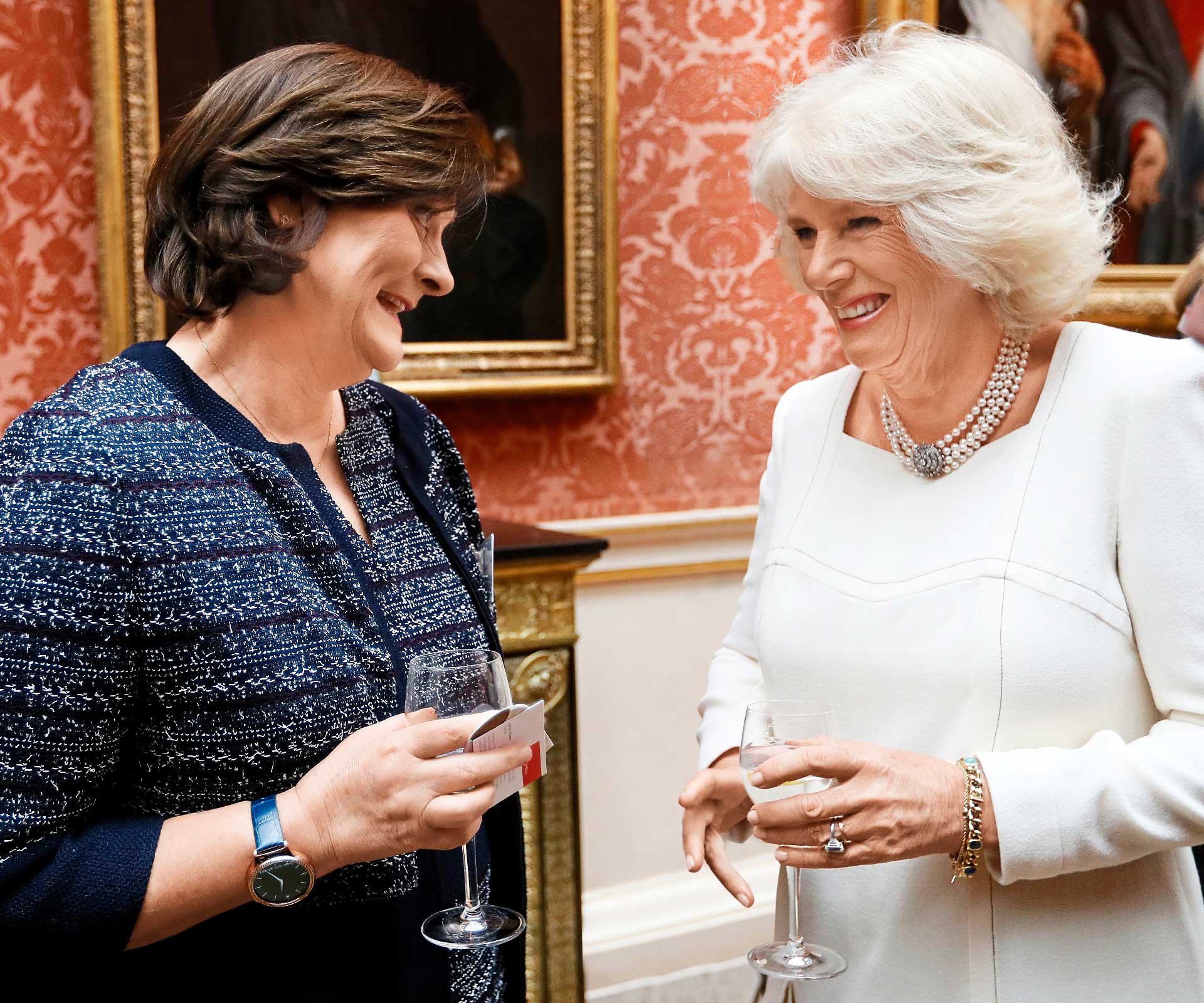
Chatting with Cherie Blair at the 2017 WoW Festival.
Elsa, who has since worked closely with the Duchess, agrees.
“She married first and foremost for love. Before they got married there was an alleged incident of bread rolls being flung at the Duchess in the supermarket. I don’t know if that really happened, but it’s not been easy for her. It wasn’t an easy job to take on or an easy family to marry into. But she’s put love of her husband above everything and she’s made a really good job of it.”
That job is full-on. The Duchess is President or Patron of more than 90 charities, and last year carried out 220 engagements. In my two weeks with Her Royal Highness there was barely pause to draw breath as we travelled to Yorkshire, Nottingham and Cheltenham, and dashed around the capital.

The Duchess’ work over these days was intensive and diverse, involving long, formal ceremonial events with senior royals at Westminster Abbey for the Observance for Commonwealth Day service and at Horse Guards Parade for the unveiling of a memorial to soldiers lost in Afghanistan and Iraq, interspersed with personal projects including her pioneering work with victims of rape, championing of a UK offshoot of OzHarvest with Australian activist Ronni Kahn and Jamie Oliver, meeting families at an RAF base and attending Ladies Day at the Cheltenham Festival – where she also had a fine time chatting to her ex-husband, Andrew Parker Bowles.
This is the day-to-day of royal work, but behind the handshaking, the meeting and greeting and the speeches, I soon discover that the Duchess is forging her own path in quiet, under-the-radar sorties.

Prince Charles and the Duchess of Cornwall on their wedding day in 2005 at Windsor Castle with Prince Harry, Prince William, and the Duchess’ children, Laura and Tom Parker Bowles.
Lieutenant-General Patrick Sanders is the Commander Officer of the Rifles and in 2007 the Duchess became his Colonel-in-Chief. This is the first time General Sanders has talked about the Duchess’ surprising and unique relationship with the Rifles.
“She has become like a fairy godmother,” says the General. “She is very proud of the battalion and very proprietorial. We are her battalion; we are her riflemen. She knows people across all three messes by name – and we’re intensely proud of her.”
As the daughter and former wife of army men, the Duchess has a deep understanding of the military way of life.
“A couple of months after her first visit, we deployed on a tour of Basra [in Iraq], which in 2007 wasn’t a particularly good place to be,” says Sanders. “We had an extremely violent tour. In the space of three-and-a-half months, we had just under 100 wounded and 12 people killed.
“The Duchess very quickly became concerned for us and asked if I would mind keeping her updated. So I then got into the cycle of writing every week. She was taking an intense interest in our casualties and in our families and quietly, behind the scenes, she was inviting the families down to Highgrove; she was writing to the families of everyone injured and killed, and sending bottles of whisky. Riflemen would get wounded, find themselves in hospital, and once they’d recovered sufficiently someone would put a bottle of Laphroaig – a pungent and expensive Scotch whisky – and a personal letter from the Duchess of Cornwall in their hands.
“It meant an enormous amount because we felt very isolated. We were doing a dirty job on behalf of the country, we were taking a lot of casualties and we didn’t really feel anyone got it. And she did. So in those difficult few months when we were there, her words of encouragement and support and love, frankly, were incredibly powerful.”

The Duchess chats to ex-husband Andrew Parker Bowles at Cheltenham races.
Another project close to the Duchess’ heart is her wash bag initiative, forged with the help of journalist Elsa McAlonan. It began with the Duchess privately visiting rape crisis centres in 2009 and talking to victims.
The encounters deeply affected the Duchess, her team reveals, and she came away, often in tears, with a strong desire to help in a practical way. She came up with the idea of producing wash bags containing shampoo, deodorant, a toothbrush, face washer, hairbrush and more, which would be given to victims who were going through the ordeal of medical examinations.
It has taken eight years for the Duchess to implement the wash bags nationally in the UK, partnering with British company Boots. So it’s an emotional day when we visit the launch of the initiative.
Deborah Hooton, who runs the Nottingham Sexual Assault Referral Centre in Nottingham says, “The fact she’s taken such an interest in people who have experienced sexual violence is incredible. To know that somebody in the royal family is there supporting them, I think it’s really critical.”

While in New Zealand in 2015, Camilla met mothers and babies at an introduction to the Bellyfull charity.
As I talk to more people – at Maggie’s, a cancer charity, at the National Osteoporosis Society, at Women’s Aid and to Ronni Kahn of OzHarvest, the Australian charity redistributing waste food, the story is the same. The Duchess works quietly to make things happen.
“We had a visit from the Duchess of Cornwall in late 2015 in Sydney and she loved everything about our model and as she was leaving she said, ‘I’d love to see this in the UK,’” Ronni tells me as she prepares to launch UKHarvest at a vast, impressive event with chef Jamie Oliver on the banks of the River Thames.
“Through the Duchess we were introduced to contacts in the UK who have been instrumental in helping us set the groundwork. And now the Duchess is our Patron.”
One patronage that Her Royal Highness is passionate about is her brother Mark Shand’s Elephant Family, a charity that protects Asian elephants and their habitat. She and Prince Charles were already involved before Mark died tragically in April, 2014, after a freak fall in New York, but they are now joint Presidents.

The royal couple wearing korowai at Turangawaewae Marae.
The siblings had a special connection, his former partner and co-worker in the charity, Ruth Powys, tells me.
“Mark was always naughty. He was mummy’s favourite and he had Annabel and Camilla, weary older sisters who knew he was always going to get up to something. But they were very close.
“They are the warmest, warmest family with this incredible ability to connect with people. Mark could put his finger on whatever it was that made you you, identify it and then that would always be a theme in your interactions going forward. And I see that with all of them; they read people incredibly well.”
Ruth says Mark “had this complete and utter delight” in his sister’s royal marriage.
“He was extremely proud of her, having known what they all went through and what she in particular went through.
“Without a doubt it was a huge shock for the Duchess when he died. She adored her brother and they had so much fun. I’d often be sitting next to him when he was on the phone to her and you’d see the other side of this great sense of humour, this witty banter. I think it was a very big blow.
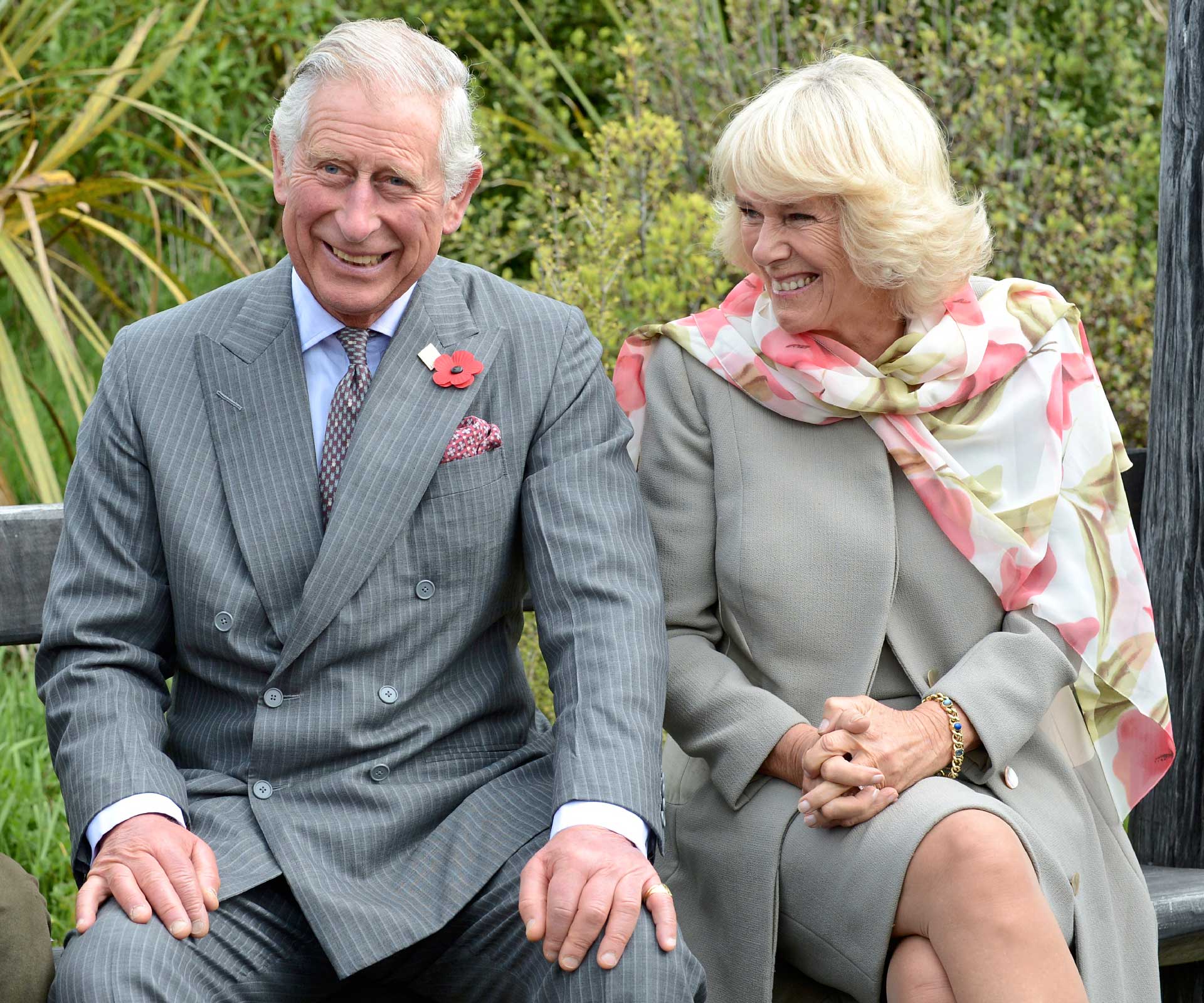
There was a rare image of the Duchess in tears at the funeral. And I think for such an incredibly controlled person that image said such a lot, really, in terms of how it had hit her.
“It was absolutely stellar of them to have taken over the Elephant Family. We didn’t expect it. We’re a small organisation for this species. I hope Mark knows on some level what’s happened so soon after he’s left us all.”
The other loss that cut deep for the Duchess was losing her mother, Rosalind, to osteoporosis. After her death in 1994, Camilla’s response was elemental. She became involved with the National Osteoporosis Society and of course is now its President.
As I travel around Britain it’s obvious that opinion has shifted in the 12 years that the Duchess has been married.
“I think there’s been a huge change of attitude towards her and I think that change will continue,” says Cherie Blair.
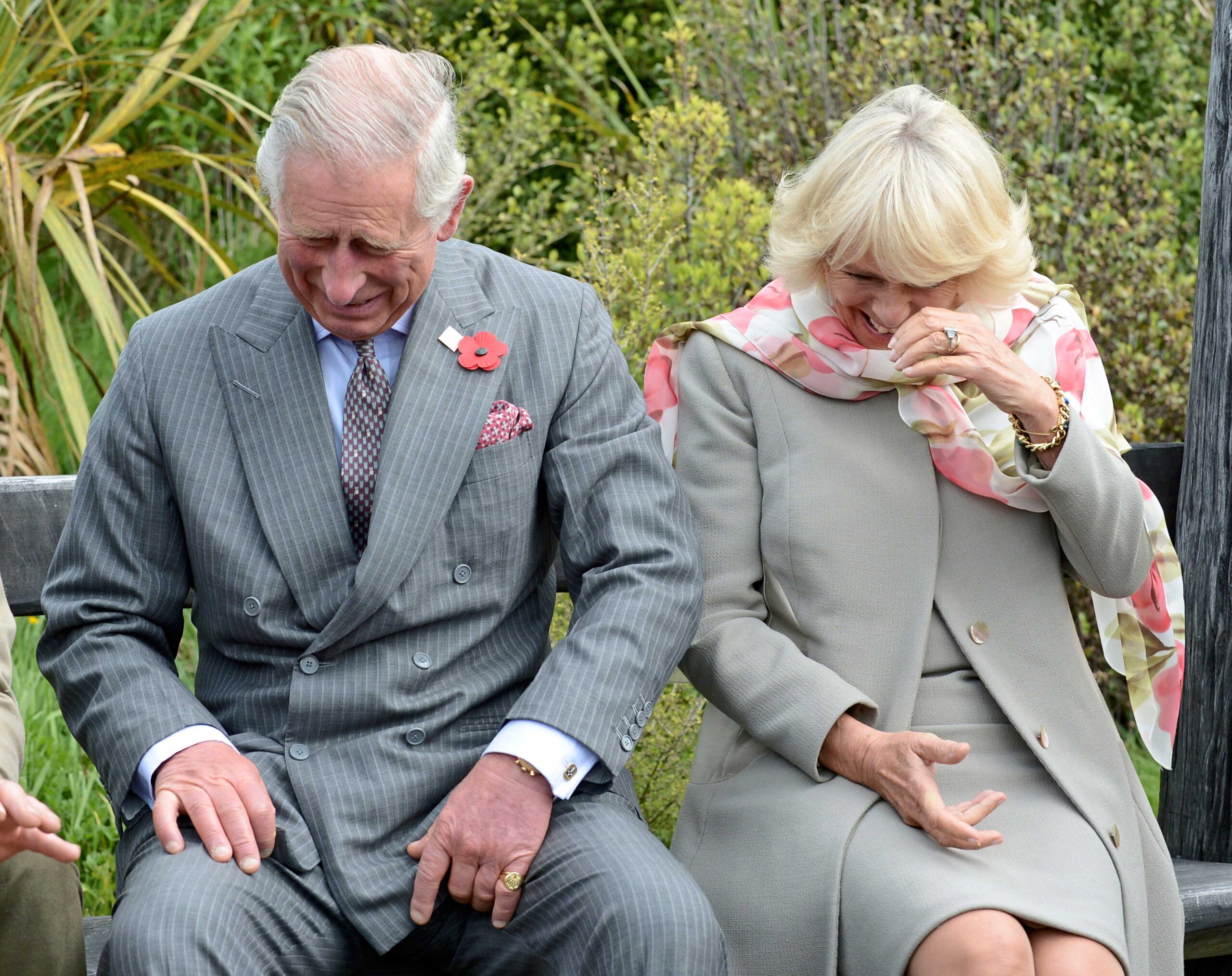
Dame Julia Cleverdon has also noticed a seismic change in the Prince.
“Having seen him in the really tough times and then in the last 12 years, he is a different man in confidence and in fun. You can see them on joint engagements giggling together. That’s very different to where we were.”
So are they ready for the biggest job of their lives, with Charles as Monarch and Camilla by his side?
“I think ‘cometh the hour, cometh the woman’, actually,” says Dame Julia.
“He’ll be the best prepared King we’ve ever had and I think the two of them will face whatever comes in the way they’ve faced the past, which is with courage, grace, humility and with great clarity that this is their duty, their responsibility.
“I think it’s a very strong, a very happy partnership. I’m sure they have argy-bargies about why he won’t stop doing his red boxes [of official papers]; he is absolutely driven. He only has time to do it by never sleeping, with the Duchess saying: ‘When are you coming to bed?’”
Words: Juliet Rieden
